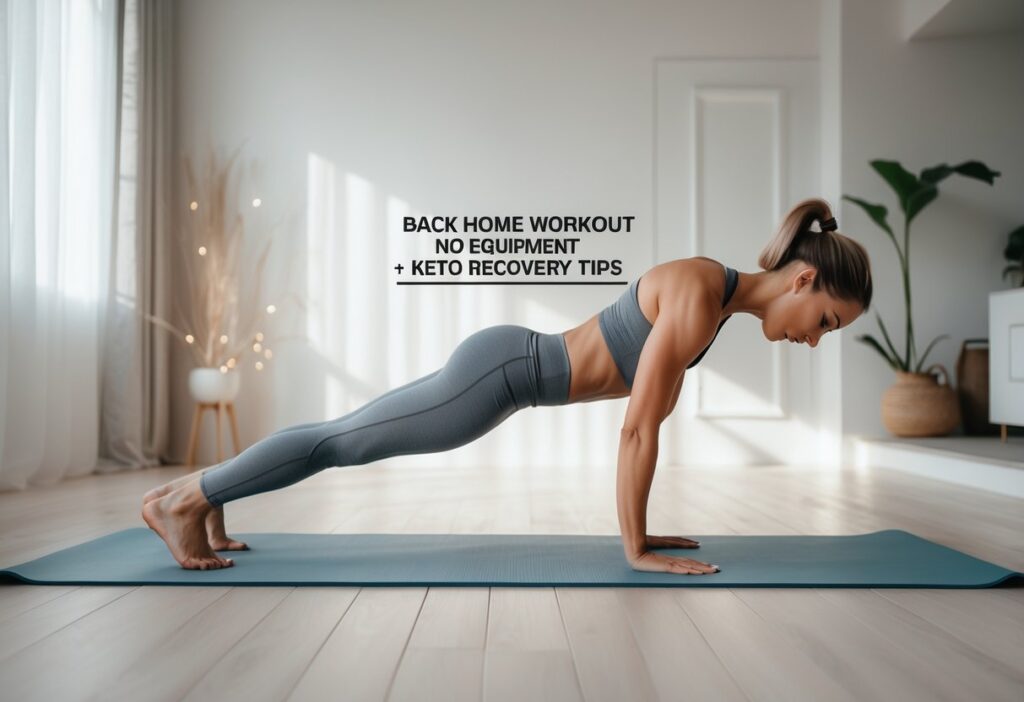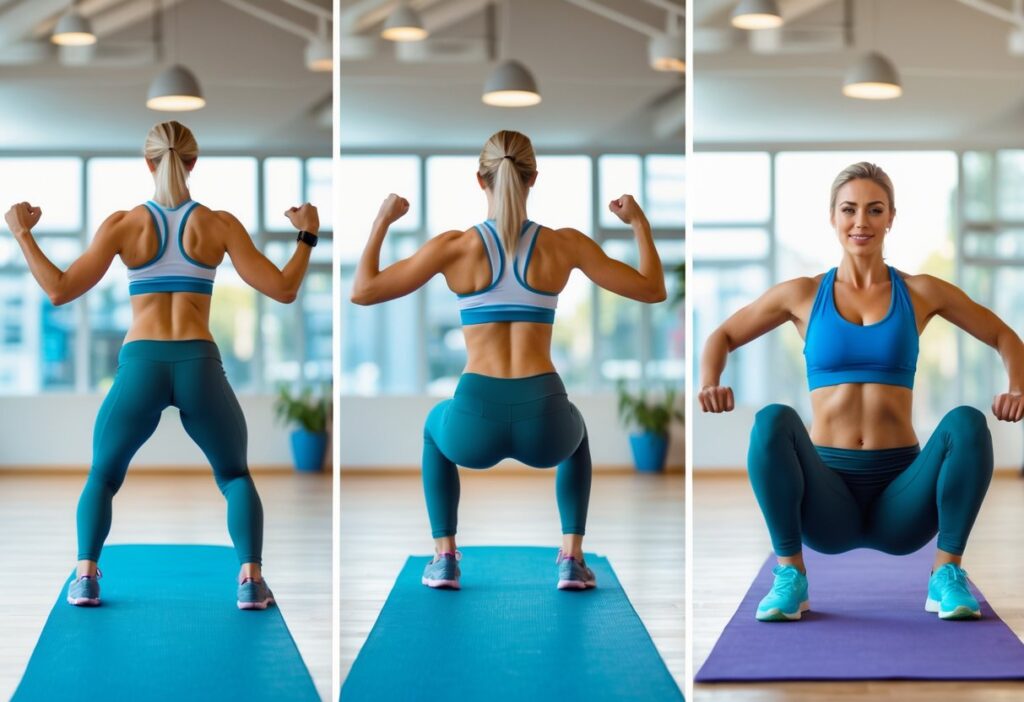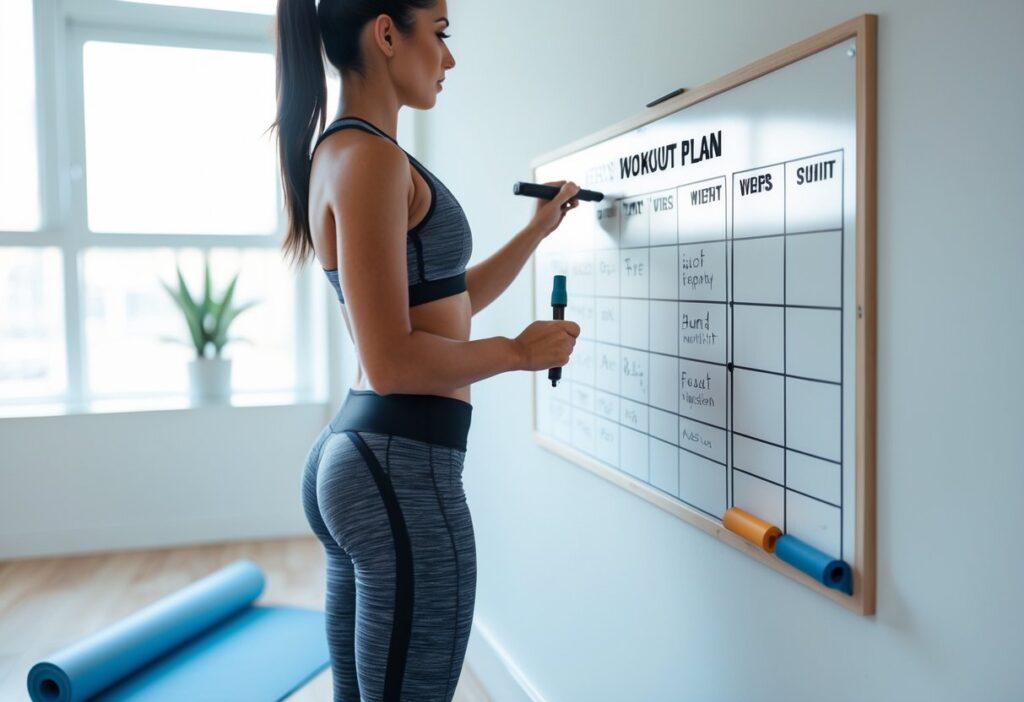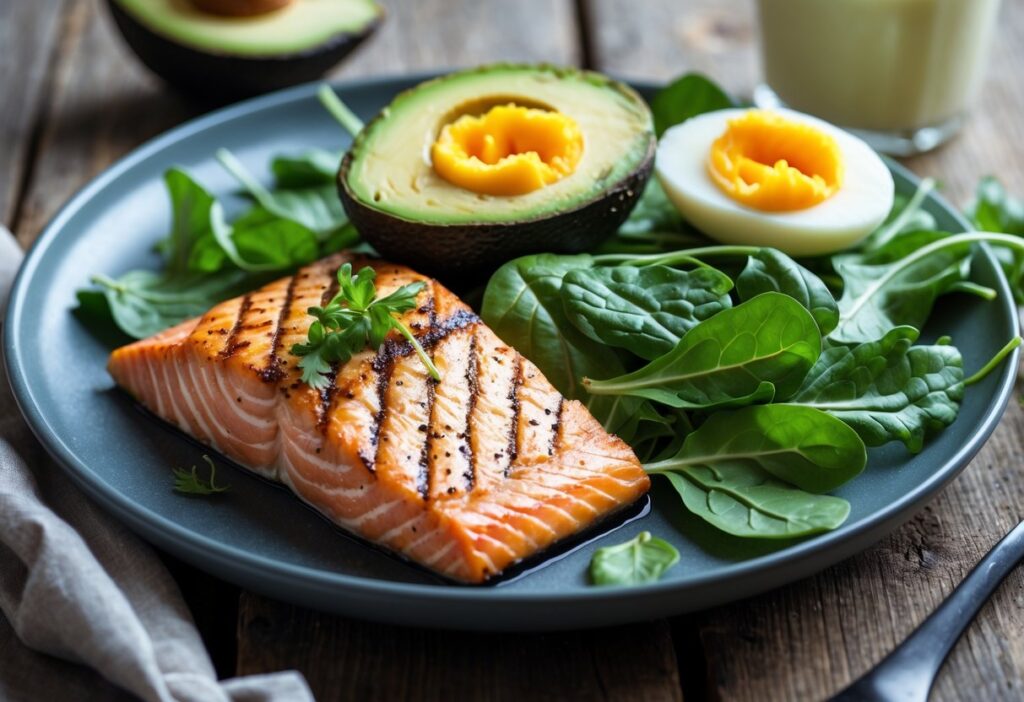Back Home Workout: Strengthen Your Back Without Equipment and Optimize Recovery with Keto Tips
This post may contain affiliate links. If you purchase through these links, I may earn a small commission at no extra cost to you. LEARN MORE.
A strong back is important for good posture and daily movement, but not everyone has access to a gym or equipment.
Anyone can strengthen their back at home using simple bodyweight exercises, along with smart nutrition for recovery. These exercises help target major back muscles and can fit any fitness level.

Along with movement, what you eat also plays a big part in supporting your results.
Jumpstart your strength transformation with a Custom Keto Diet plan tailored for fitness and recovery.
Ketogenic (keto) recovery strategies provide the right fuel for muscles and help reduce soreness after workouts.
- Home back workouts build strength with no equipment.
- Bodyweight moves and keto nutrition help improve recovery.
- Consistency and balance are key for noticeable progress.
Understanding Back Muscles and At-Home Strengthening

Back muscles support the spine, help with posture, and allow for many everyday movements.
Strengthening them with bodyweight workouts can boost stability, reduce pain, and improve mobility without needing special equipment.
Key Back Muscles Involved in Bodyweight Training
Several main back muscles work during bodyweight exercises.
The latissimus dorsi runs along each side of the back and helps with pulling actions.
The trapezius sits across the upper back and controls shoulder movement.
The rhomboids are between the shoulder blades and help retract the shoulders.
Other key muscles include the erector spinae along the spine that keep the back upright, and the lower back muscles that support the core.
Basic exercises like supermans, reverse snow angels, and bird dogs target these areas using only body weight.
Benefits of Strengthening Your Back Without Equipment
Training the back at home, using just body weight, is accessible to most people and requires little space.
It improves muscle mass and core strength, leading to better posture and fewer back injuries.
Increased back strength supports daily activities such as lifting and bending.
Bodyweight resistance training can also improve joint stability and mobility.
Because these exercises rely on natural movement, there is less risk of overloading the body.
Many people notice less back pain and more flexibility after adding these movements to their routine.
Common Myths About Back Workouts at Home
A common myth is that building a strong back always requires weights or machines.
Many believe at-home resistance training is not effective, but studies show bodyweight workouts can boost muscle and strength when done with good form and consistency.
Some think bodyweight exercises only target small muscles, but moves like pushups, planks, and bridges engage large back and core muscles.
Another belief is that these workouts are unsafe, but when done correctly, they are low-risk and can even help with injury prevention.
Fact Check Table:
| Myth | Truth |
|---|---|
| Need equipment to build muscle | Bodyweight can increase strength |
| Only targets small muscles | Engages large muscle groups |
| Not safe for beginners | Safe if performed with proper technique |
A strong back improves posture and supports movements like those found in our Home Workout Leg Exercises
Essential Equipment-Free Back Home Workout

Back muscles can get stronger using only bodyweight exercises at home.
Good exercise form helps prevent injuries and supports progress.
Flexibility and a strong core protect the spine and improve movement in everyday life.
Effective Bodyweight Exercises for Back Strength
Bodyweight exercises use a person’s own weight to build back strength.
These exercises focus on stabilizing and strengthening muscles that support the spine.
Key bodyweight back exercises:
- Supermans
- Bird Dogs
- Reverse Snow Angels
- Elbow Presses
- Inverted Rows (using a sturdy table)
Superman: Lie on your stomach, stretch arms forward, and lift arms and legs off the ground.
Hold for 2-3 seconds, then lower them. This move targets the lower back and glutes.
Bird Dog: Start on hands and knees. Extend one arm and the opposite leg at the same time.
Hold for a second, then switch sides.
Reverse Snow Angel and Elbow Presses help improve upper back strength.
They also support better posture.
Best Techniques for Squats, Planks, and Push-Ups
Squats, planks, and push-ups are not just for legs or chest—they work the back muscles, too.
- Squats: Keep your chest up and back straight. Lower down as if sitting, then return to standing. Squeeze your shoulder blades together slightly as you move.
- Planks: Brace your core and keep your body in a straight line from head to toes. Do not let your hips sag.
- Push-Ups: Keep elbows at a slight angle and engage the muscles between your shoulder blades as you lower your chest.
Proper technique matters more than speed.
Focus on controlled, steady movement to get the most benefit.
Start with short sets and increase the number of reps as you get stronger.
Tip:
| Exercise | Main Focus | Back Involvement |
|---|---|---|
| Squats | Legs, Glutes | Upper & Lower Back Stability |
| Planks | Core | Spinal Alignment |
| Push-Ups | Chest, Shoulders | Upper Back & Posture |
hese movements build overall stability – key for both your back and legs as explored in our Strength Training for Women.
Improving Core Strength for Better Back Support
A strong core includes the abdominal muscles, sides, and even muscles around the lower back.
These muscles protect the spine and help with almost every movement.
Important core exercises for back support:
- Dead Bugs
- Side Planks
- Glute Bridges
- Pelvic Tilts
Dead Bugs: Lie on your back with arms up and knees bent.
Lower one arm and the opposite leg toward the floor, keeping your lower back flat. Return and repeat with the other side.
Side Planks: Support your body on one forearm and the side of one foot.
Keep your body in a straight line. Hold for as long as possible.
These moves build a stable core, making daily activities easier and reducing the risk of back pain.
Strong core muscles also enhance ketosis effects, as we covered in Exercise and Ketosis.
Integrating Yoga and Flexibility Movements
Yoga helps improve flexibility and can gently strengthen the back without heavy strain.
Simple poses also relieve muscle tension.
Good yoga poses for back health:
- Cat-Cow Stretch
- Child’s Pose
- Downward Dog
- Cobra Pose
Cat-Cow: Start on your hands and knees.
Slowly alternate arching your back up (cat) and dropping your belly down (cow). This stretch works the entire spine.
Child’s Pose: Kneel with arms reaching forward on the floor.
Rest your forehead down. This position relaxes the lower back.
Regular yoga practice increases flexibility, keeps muscles from tightening up, and supports a healthy posture.
Starting with basic moves is safe for most people.
Stretching after workouts also helps with recovery and reduces soreness.
Building a Balanced Home Workout Routine

A well-designed home workout strengthens more than just one area.
Focusing on all major muscle groups, proper technique, and using variety in the exercise routine prevent injury and help to see steady progress.
Designing a Back-Focused Exercise Routine
A back-focused exercise routine at home should target the upper, middle, and lower back.
Important muscles include the latissimus dorsi, trapezius, and rear deltoids.
Common bodyweight exercises include:
- Supermans: Lying face down, lift arms and legs to squeeze the lower back.
- Inverted Rows (using a sturdy table): Pull the chest up toward an edge or bar.
- Prone Y-T-W: Lie on the stomach, move arms into Y, T, and W shapes to hit upper back fibers.
A sample weekly back plan could be:
| Day | Focus |
|---|---|
| Mon/Wed | Supermans, Prone Y-T-W, Inverted Rows |
| Sat | Repeat any two favorite back movements |
Use slow, controlled movements and aim for 2-4 sets of 10-15 reps per exercise.
Enhance your workout results with Java Burn, a metabolism booster that complements keto and bodyweight training.
Incorporating Legs, Biceps, Triceps, and More
A balanced workout plan also trains the legs, arms, chest, and core.
Working these muscle groups helps prevent muscle imbalances and improves overall fitness.
For legs, use bodyweight squats, lunges, and glute bridges.
To target biceps and forearms, try close-grip push-ups or use towel curls under feet.
Triceps can be trained with triceps dips (using a chair) and diamond push-ups.
A weekly schedule could look like:
- Monday: Back + Triceps
- Wednesday: Legs + Core
- Friday: Back + Biceps + Forearms
Keep rest short to build endurance.
Adjust exercise variety every few weeks to keep progress steady.
Your back gains faster when synergistic muscles are trained, similar to the structure in our 4-Week Strength Program.
How-to Videos for Proper Technique
Learning correct form is important for results and safety.
How-to videos are a valuable tool, especially for someone training without equipment or guidance at home.
Watching step-by-step tutorials helps clarify how each exercise should look and feel.
Look for trustworthy fitness channels on YouTube or official health websites.
Focus on videos that break down each movement, show multiple angles, and give clear verbal cues—like where to keep feet and hands, or how to align the spine.
If possible, film your own movements and compare them to the video for feedback.
This ensures the fitness routine is safe and effective, reducing the risk of injury during the exercise routine.
Optimizing Recovery: Keto Nutrition and Muscle Repair

Proper nutrition helps the body repair muscles after workouts and supports energy levels.
A keto meal plan, smart food choices, and easy prepping can boost recovery and support muscle growth.
Benefits of a Keto Meal Plan for Muscle Recovery
A keto meal plan focuses on low-carb foods and higher levels of healthy fats and moderate protein.
This approach can help keep blood sugar stable and reduce inflammation after exercise.
Stable energy levels also mean fewer crashes during the day.
Eating enough protein remains important on keto.
Adequate protein helps repair muscle tissue after exercise and can prevent muscle loss.
Some find that keto supports faster muscle recovery due to reduced swelling in muscles.
Good sources of protein on keto include eggs, chicken, fish, beef, and cheese.
Healthy fats like avocado, nuts, and olive oil give the body needed energy.
Including leafy vegetables and low-carb berries adds vitamins and minerals that support healing.
Keto supports muscle repair, especially when combined with techniques from our Intermittent Fasting and Keto Guide.
Practical Keto Meal Prepping Tips
Meal prepping helps people stick to a keto meal plan and prevent skipping meals after working out.
Prepping balanced meals saves time and removes guesswork about what to eat.
A simple way to start is to cook large portions of proteins, such as baked chicken or grilled salmon, at the start of the week.
Pair these with cooked or raw vegetables like spinach, broccoli, or cauliflower.
Snack ideas include boiled eggs, cheese sticks, or small packs of nuts.
It helps to keep keto-friendly foods in easy-to-reach containers.
Use a weekly planner or chart to track meals and make grocery lists more efficient.
Here is an example keto meal prep for one day:
| Meal | Food Options |
|---|---|
| Breakfast | Scrambled eggs with spinach |
| Lunch | Grilled chicken with avocado salad |
| Snack | Cheese and nut mix |
| Dinner | Beef stir-fry with broccoli |
See our tips in 15 Genius Keto Meal Prep Ideas for a beginner-friendly prep structure.
Supporting Muscle Growth with Smart Nutrition
Muscle growth needs more than just protein; the body also requires micronutrients like magnesium, potassium, and sodium.
These minerals help prevent cramps and muscle fatigue, which are common after back workouts.
Electrolyte-rich foods—such as nuts, seeds, leafy greens, and salmon—support hydration and keep muscles working well.
Keto-friendly shakes with protein and added minerals can fill gaps if whole foods aren’t enough.
Staying hydrated matters on keto because the body loses water faster.
Aim to drink water throughout the day and add a pinch of salt to foods when needed.
Support recovery and fat burning with Nagano Tonic, ideal for those following a ketogenic lifestyle.
Maximizing Results and Maintaining Progress

It’s important to have a system to monitor improvement and to build habits that support long-term fitness.
Success comes from clear goals, tracking performance, and using strategies that encourage consistency in any exercise regimen.
Tracking Back Workout Performance at Home
Measuring progress is necessary to see if back workouts are effective.
Keeping a simple workout log can make this easier.
Write down exercises, sets, reps, and how difficult each session feels.
Simple Tracking Table Example:
| Date | Exercise | Sets | Reps | Effort (1-10) |
|---|---|---|---|---|
| 06/14/25 | Wall Angels | 3 | 15 | 6 |
| 06/14/25 | Bird Dogs | 3 | 12 | 5 |
Taking weekly photos or videos helps people notice small changes in muscle definition and posture.
They may also test strength by timing how long they hold a plank or how many reps they can do before getting tired.
These methods let anyone see real improvements, even when only using bodyweight exercises at home.
Staying Motivated and Consistent Without Equipment
Building consistency in fitness can be hard when the workouts use no equipment.
Planning short workouts during regular times each week supports habit formation.
Setting reminders or writing workout times on a calendar can help stick to the routine.
Making small goals, like adding one more repetition or holding a plank longer, keeps things interesting.
Some people use checklists to mark each completed workout, which builds a feeling of success.
Changing up the exercises every few weeks also prevents boredom and challenges different back muscles.
Finding a friend or family member to join, even virtually, boosts accountability.
Sharing progress or struggles together can improve motivation, making it easier to follow the exercise regimen and continue seeing results.
Consistency is the same driver behind fat loss seen in our Clean Keto vs Dirty Keto comparison
Frequently Asked Questions
There are several ways people can train their back muscles at home using only their own bodyweight.
Both men and women can use these methods, and programs can be adjusted to focus on different goals like muscle growth, strength, or toning.
Supportive recovery tips are important for anyone on a keto diet after exercising.
What bodyweight exercises can strengthen my upper back with no equipment?
Moves like prone arm raises, reverse snow angels, and Superman holds target the upper back.
Hand-release push-ups and bodyweight rows under a table can also build muscles in this area.
Arm circles and wall slides are simple ways to activate the upper back at home.
Can you recommend a routine for lower back strengthening at home without weights?
Supermans, bird dogs, and bridges help build lower back strength.
For a quick routine, do three sets of 10-15 reps for each exercise.
Focus on keeping movements slow and controlled to avoid strain.
How can women effectively work out their back muscles at home without equipment?
Women can use the same bodyweight movements as men, including prone Y raises, Superman holds, and reverse snow angels.
Shorter rest periods and higher repetitions can help with muscle tone and endurance.
Consistency is more important than the amount of exercise.
What back toning exercises can be performed at home for quick results?
Bodyweight lat pulldowns, plank rows, and standing reverse flys are useful for toning.
Aim for exercises that target different parts of the back.
Tracking progress with pictures or reps can help measure improvements over a few weeks.
Are there specific back workouts suitable for men to do at home with no equipment?
Men may prefer routines with higher intensity or slow negatives for muscle building.
Inverted rows under a sturdy table, slow push-ups, and prone W raises are useful.
Combining these with core exercises like planks can further support the back.
What are the best practices for recovering from a back workout on a keto diet?
On a keto diet, recovery can be supported by staying hydrated and consuming enough electrolytes.
Including moderate protein with healthy fats after workouts helps with muscle repair.
Gentle stretching and enough sleep also aid recovery.
Conclusion

Back workouts at home with no equipment are practical and effective.
These exercises help increase strength and improve posture.
Anyone can start these movements with little space and time.
Consistency matters.
Doing bodyweight back exercises 2-3 times per week supports muscle growth and balance.
Here are some helpful tips:
- Pick 3-4 back movements each session
- Aim for 2-3 sets per exercise
- Focus on slow, controlled reps
A basic schedule might look like:
| Day | Exercise | Sets | Reps |
|---|---|---|---|
| Monday | Bodyweight Rows | 3 | 10-15 |
| Superman | 3 | 12-20 | |
| Reverse Snow Angels | 2 | 10-15 | |
| Thursday | Prone Y Raises | 3 | 12-15 |
| Swimmers | 2 | 10-15 | |
| Wall Angels | 3 | 15 |
Eating a balanced keto meal after workouts may help recovery.
Keto-friendly foods with good fats and protein, like eggs, salmon, or avocado, can help muscles repair.
Proper rest is also important.
Getting enough sleep each night supports muscle recovery.
Plain water or electrolyte drinks can keep the body hydrated.
They help the body recover better after exercise.
Ready to level up your results? Try the Custom Keto Diet for fat-burning recovery and real back strength gains.
